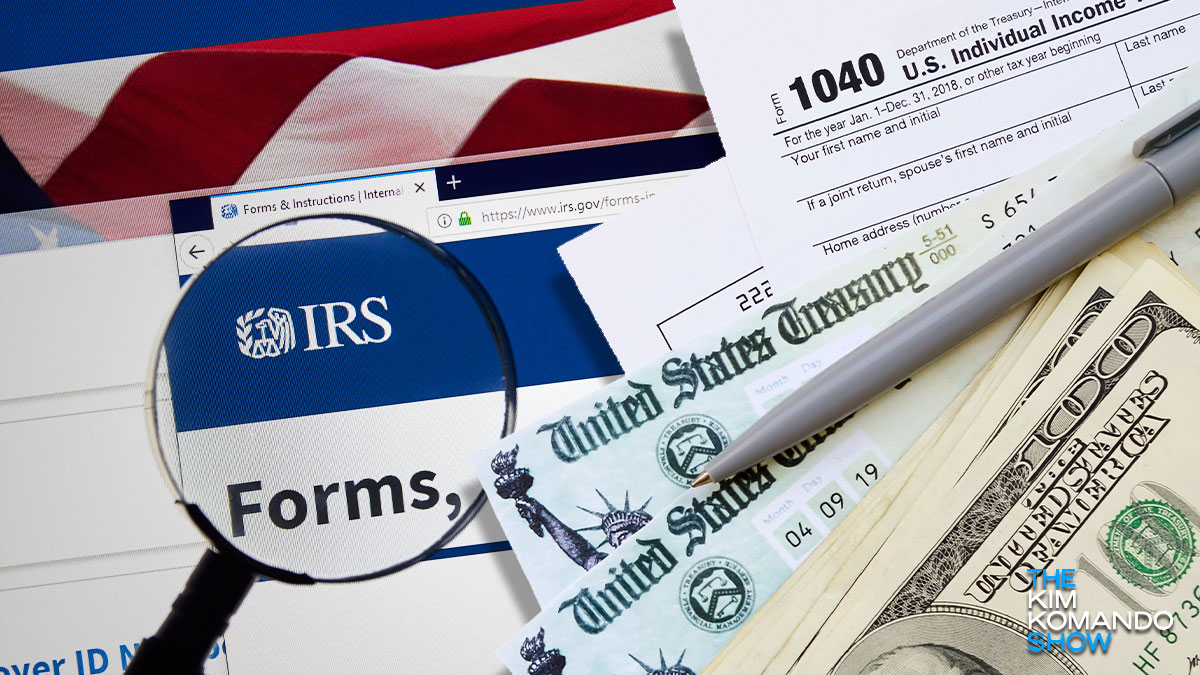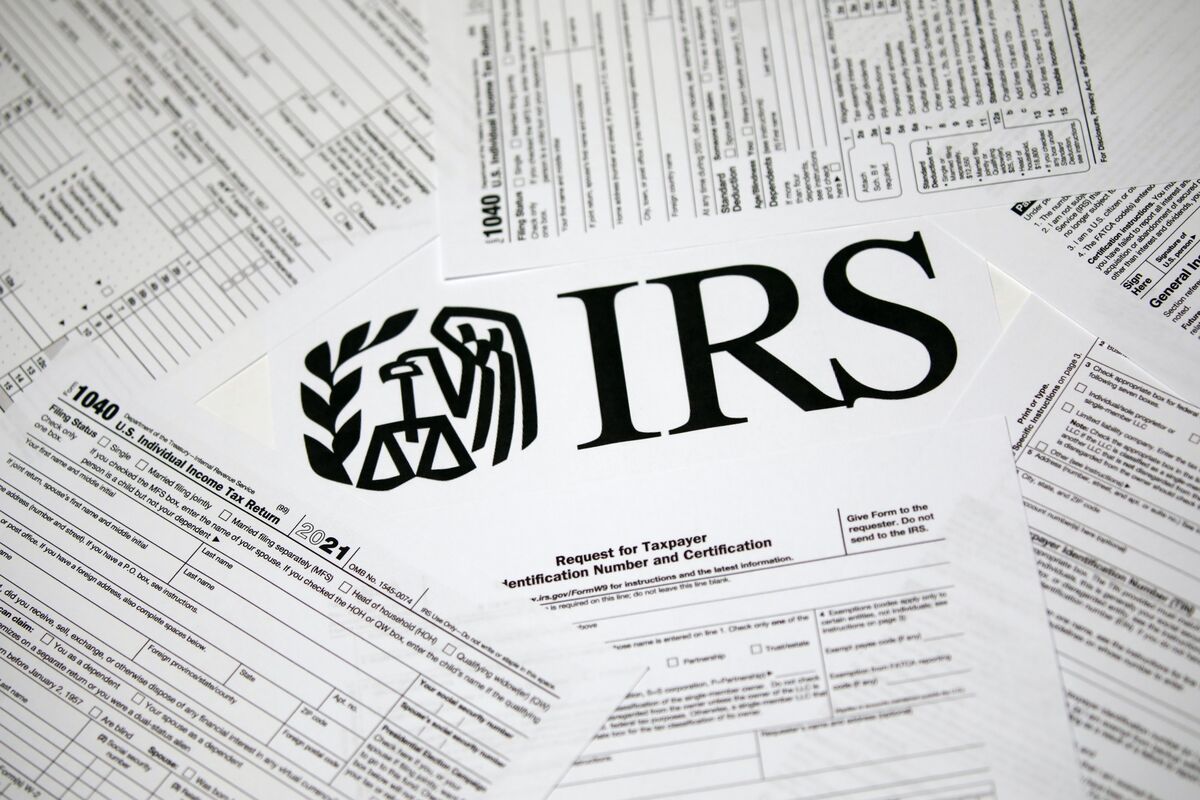

Finance
Where To Send The 2014 Tax Return
Published: October 29, 2023
Discover where to send your 2014 tax return with our Finance guide! Ensure you file correctly and meet the deadline for a hassle-free tax season.
(Many of the links in this article redirect to a specific reviewed product. Your purchase of these products through affiliate links helps to generate commission for LiveWell, at no extra cost. Learn more)
Table of Contents
Introduction
Filing tax returns can be a daunting task for many individuals and businesses. It requires careful preparation, attention to detail, and accurate documentation. Once the tax return is complete, the next important step is to send it to the appropriate tax authority. Knowing where to send your tax return is crucial to ensuring it reaches the right destination and is processed in a timely manner.
In this article, we will explore the various methods and options available for sending your 2014 tax return. Whether you prefer traditional mail, electronic filing, or in-person submission, we will guide you through the process and provide valuable insight to help you make the right choice.
Before diving into the specifics, it is important to understand the basics of tax returns. A tax return is a document that individuals, businesses, and organizations must file with the tax authority to report income, expenses, deductions, and tax liability for a specific period. The filing of tax returns is mandated by law in order to determine the amount of tax owed or to claim a refund.
Now, let’s explore the different options and deadlines for sending your 2014 tax return.
Understanding Tax Returns
Before delving into the specifics of sending your 2014 tax return, it’s essential to have a clear understanding of what a tax return entails. Essentially, a tax return is a document that individuals, businesses, and organizations must file with the tax authority to report their income, expenses, deductions, and tax liability for a specific period.
When completing your tax return, you will need to gather relevant financial information such as W-2 forms, 1099 forms, receipts, and documentation of expenses. This information will help determine your taxable income and any deductions or credits you may be eligible for.
It’s important to accurately report your income and expenses on your tax return to avoid penalties or audits by the tax authority. Taking the time to carefully review your information and seek professional advice if needed can help ensure that your tax return is prepared correctly.
Furthermore, understanding the different sections and schedules of the tax return is crucial. Depending on your income sources and deductions, you may need to include additional schedules and forms along with your main tax return form. These schedules provide additional details on specific types of income or deductions and may be required for certain individuals or businesses.
By familiarizing yourself with the various sections and schedules of the tax return, you can ensure that you accurately report your financial information and take advantage of any applicable deductions or credits. This will help minimize your tax liability and potentially increase your chances of receiving a refund.
Next, let’s explore the important dates and deadlines for the submission of your 2014 tax return.
Important Dates and Deadlines
When it comes to sending your 2014 tax return, it’s crucial to be aware of the important dates and deadlines set by the tax authority. Missing these deadlines can result in penalties, interest charges, or even the loss of potential refunds.
The deadline for filing your 2014 tax return was typically April 15th of the following year. However, it’s important to note that this deadline can vary depending on various factors such as holidays or weekends. It’s always recommended to double-check the specific deadline for your tax jurisdiction to ensure you meet the required date.
If you are unable to file your tax return by the deadline, you have the option to request an extension. By filing Form 4868, Application for Automatic Extension of Time to File U.S. Individual Income Tax Return, you can receive an additional six months to file your tax return. However, it’s important to remember that this extension only applies to the filing deadline, not the payment of any tax due. Any tax owed must still be paid by the original deadline to avoid penalties and interest.
Keep in mind that even with an extension, it’s always best to file your tax return as soon as possible. Delaying the process can lead to potential setbacks, such as missing out on tax refunds or encountering unnecessary stress as the new deadline approaches.
It’s worth noting that if you are eligible for a tax refund, there is no penalty for filing your tax return after the deadline. However, it’s still wise to file as soon as possible to secure your refund.
Understanding the important dates and deadlines for your tax return submission is crucial to avoid unnecessary penalties and ensure timely processing of your return. With this knowledge in mind, let’s now explore the different methods available for sending your tax return.
Types of Tax Return Filing Methods
When it comes to sending your 2014 tax return, you have several options to choose from. Each method has its own advantages and considerations, so it’s important to choose the one that best suits your needs.
1. Traditional Mail: The most traditional method of sending your tax return is through mail. This involves printing out your completed tax return and any supporting documents, placing them in an envelope, and sending them to the appropriate mailing address. Make sure to use certified mail or a reputable courier service to ensure secure delivery and obtain proof of mailing.
2. Electronic Filing (e-filing): E-filing has become increasingly popular in recent years due to its convenience and efficiency. With e-filing, you can submit your tax return electronically to the tax authority. This method ensures faster processing and reduces the risk of errors since the software verifies the accuracy of your information before submission.
3. In-person Submission: Some tax authorities offer the option to submit your tax return in person at their office. This allows you to hand-deliver your documents and receive immediate confirmation of receipt. However, it’s important to check the availability and requirements for in-person submission, as it may not be an option for all taxpayers.
4. Online Tax Preparation Services: Many online platforms provide tax preparation services that allow you to complete and file your tax return online. These services guide you through the process, ask relevant questions to ensure accurate reporting, and assist with error checking. Once your tax return is complete, it is electronically filed on your behalf.
Now, let’s delve deeper into the process of choosing the correct mailing address for your tax return.
Choosing the Correct Mailing Address
When sending your 2014 tax return by mail, it’s crucial to choose the correct mailing address to ensure that it reaches the right destination. The mailing address for your tax return depends on various factors such as your location, type of return, and specific circumstances. Here are some guidelines to help you choose the correct mailing address:
1. Federal Tax Returns: If you are filing a federal tax return, the mailing address will depend on your state of residence and whether you are enclosing a payment or not. The Internal Revenue Service (IRS) provides specific mailing addresses based on these factors, so it’s important to consult the IRS website or the instructions accompanying your tax return form to find the correct address.
2. State Tax Returns: If you are required to file a state tax return, each state has its own designated mailing address. You can usually find the correct address on the state’s Department of Revenue website or in the instructions accompanying your state tax return form.
3. Specialty Tax Returns: Depending on your situation, you may need to file specialty tax returns such as estate tax returns or gift tax returns. These returns also have their own specific mailing addresses, which can usually be found on the respective tax authority’s website or in the instructions provided with the tax return form.
4. International Mailing: If you are filing a tax return from outside of the United States or if you need to send your tax return to an international tax authority, it’s important to verify the correct mailing address and any additional requirements for international mail. Consulting the tax authority’s website or contacting them directly will help ensure that your tax return reaches the intended recipient.
It’s crucial to double-check the mailing address before sending your tax return to avoid unnecessary delays or complications. Using the correct mailing address will ensure that your tax return is processed promptly and accurately.
Next, let’s explore the process of sending tax returns by mail.
Sending Tax Returns by Mail
If you choose to send your 2014 tax return by mail, it’s important to follow the proper procedure to ensure that it is received and processed accurately. Here are the steps to successfully send your tax return by mail:
1. Prepare Your Tax Return: Before mailing your tax return, make sure it is fully completed, signed, and dated. Review it for accuracy and attach any required supporting documents, such as W-2 forms or 1099 forms. Keep a copy of your tax return and all supporting documents for your records.
2. Package Your Documents: Place your tax return and supporting documents in an envelope or package that can adequately protect the contents. Consider using a sturdy envelope or a mailing tube for added protection, especially if your tax return includes multiple pages or sensitive information.
3. Choose a Secure Delivery Method: When sending your tax return, it’s recommended to use certified mail or a reputable courier service that provides a tracking number and delivery confirmation. This allows you to track the progress of your package and provides proof of delivery, which can be crucial in case of any disputes or delays.
4. Use the Correct Mailing Address: Double-check that you are sending your tax return to the correct mailing address. The address can vary depending on factors such as your location, type of return, and specific circumstances. Consult the appropriate tax authority’s website or the instructions accompanying your tax return form to ensure accuracy.
5. Complete Required Forms and Attachments: If your tax return requires specific forms or attachments, make sure they are included and properly completed. These forms provide additional details or explanations for certain types of income or deductions. Review the instructions accompanying your tax return form to determine if any additional forms are needed.
6. Keep Proof of Mailing: After sending your tax return, it’s important to keep proof of mailing. This can include the mailing receipt provided by the postal service or the tracking number if using a courier service. This proof of mailing serves as evidence that you sent your tax return within the required timeframe.
By following these steps, you can ensure that your tax return is sent securely and reaches the appropriate tax authority in a timely manner. However, if you prefer a more efficient and faster method, electronic filing offers a convenient alternative.
Next, let’s explore electronic filing options for sending your 2014 tax return.
Electronic Filing Options
Electronic filing, also known as e-filing, has become a popular choice for sending tax returns due to its convenience, speed, and accuracy. E-filing eliminates the need for printing and mailing paper documents, making it a more efficient and environmentally-friendly option. Here are the electronic filing options available for sending your 2014 tax return:
1. IRS Free File: The IRS provides the Free File program, which offers free online tax preparation and e-filing services to eligible taxpayers. This program is available to individuals or families with a certain income threshold and provides access to leading tax software companies. You can choose a software provider from the IRS website and follow their instructions to file your tax return electronically.
2. Paid Tax Software: There are numerous paid tax software options available in the market that offer comprehensive tax preparation and e-filing services. These software programs guide you through the process of preparing your tax return, help you maximize deductions and credits, and ensure accurate calculations. Some popular tax software options include TurboTax, H&R Block, and TaxAct.
3. Authorized E-file Provider: You can also opt to use an authorized e-file provider, such as a tax professional or a tax preparation service. These providers are certified by the IRS to offer e-filing services, ensuring that your tax return is filed securely and in compliance with regulations. Before selecting an e-file provider, verify their credentials and reputation to ensure reliable and accurate service.
4. IRS Direct Online Filing: The IRS also offers a direct online filing option for individuals with simple tax returns. This method allows you to input your tax information directly on the IRS website and submit your tax return electronically. However, it’s important to note that this option may have certain limitations and may not support all types of tax returns or situations.
E-filing offers several advantages over traditional mail, including faster processing times, real-time error checking, and the ability to receive refunds more quickly through direct deposit. Additionally, e-filing reduces the risk of errors and ensures that your tax return is securely transmitted to the tax authority.
In the next section, we will explore the process of sending tax returns online and the benefits it provides.
Sending Tax Returns Online
Sending your 2014 tax return online, also known as electronic filing or e-filing, provides a convenient and efficient method for submitting your tax documents to the tax authority. The process of sending tax returns online typically involves the use of tax software or online platforms that securely transmit your tax information. Here’s a closer look at the process and benefits of sending tax returns online:
1. Select a Reputable Online Platform: Choose a reputable online tax preparation service or software platform that offers e-filing capabilities. Popular options include TurboTax, H&R Block, or TaxAct. These platforms serve as a virtual assistant, guiding you through the tax preparation process, ensuring accurate calculations, and assisting with error checking.
2. Create an Account: Sign up for an account on the chosen platform and provide the necessary personal information. This may include your name, address, Social Security number, and other relevant details. Your information is typically protected by advanced encryption and security measures to ensure confidentiality and data protection.
3. Enter Your Tax Information: Use the online platform to input your relevant tax information, including income details, deductions, credits, and any other necessary forms or schedules. The platform will typically provide step-by-step instructions to ensure accuracy and completeness.
4. Review and Edit: Once you have entered all the required information, carefully review your tax return for any errors or omissions. The online software or platform should have built-in error-checking mechanisms to help identify any potential issues. Make necessary edits or additions to ensure accuracy.
5. E-file Your Tax Return: Once you are satisfied with your tax return, you can submit it electronically through the online platform. The platform will securely transmit your tax information to the appropriate tax authority, ensuring a quick and efficient submission process.
6. Confirm Receipt and Status: After submitting your tax return online, you may receive a confirmation of receipt from the tax authority or the online platform. Additionally, many online platforms allow you to track the status of your tax return, providing updates on its processing and any potential issues that may arise.
Sending tax returns online offers numerous benefits, including faster processing times, reduced likelihood of errors, and the convenience of electronic storage and access to your tax files. Additionally, if you are eligible for a tax refund, online filing can help expedite the refund process through direct deposit into your bank account.
In the next section, we will explore alternative options for submitting your tax return in person or through alternative means.
Filing Taxes in Person
If you prefer a more personal approach, you have the option to file your 2014 tax return in person. This method allows you to physically visit the tax authority’s office or a designated tax help center to submit your tax documents. Here’s what you need to know about filing taxes in person:
1. Locate the Nearest Tax Office: Begin by identifying the nearest tax office or tax help center in your area. You can use the tax authority’s website or contact their helpline for information on the closest location.
2. Gather Your Documents: Before visiting the tax office, ensure you have all the necessary documents and forms required for your tax return. This includes your completed tax return form, supporting documentation such as W-2 forms or receipts, and any other relevant paperwork.
3. Schedule an Appointment (if needed): Some tax offices may require you to schedule an appointment before visiting in person. Check the tax authority’s website or contact their helpline to determine if an appointment is necessary.
4. Visit the Tax Office: On the scheduled day or during regular office hours, visit the tax office with your prepared tax documents. Be prepared to wait in line, as tax offices can be busy during peak filing periods.
5. Submit Your Tax Documents: Once you reach the designated counter or desk, hand over your tax documents to the authorized personnel. They will verify the completeness of your submission and provide you with an acknowledgment or receipt as proof of submission.
6. Seek Assistance (if needed): If you have any questions or need assistance with your tax return, you can ask the personnel at the tax office for guidance. They are trained to provide basic assistance and clarification on tax-related matters.
7. Keep Copies of Your Tax Return: After submitting your tax documents in person, it’s important to retain copies of your tax return and all supporting documentation for your records. These copies will be useful in case any discrepancies or inquiries arise in the future.
Filing taxes in person allows for direct interaction with tax authority personnel and may give you a sense of reassurance and guidance during the process. However, it’s important to note that this method may require additional time and effort compared to electronic filing or mailing.
In the next section, we will explore alternative options for tax return submission, which may be applicable in certain circumstances or for specific taxpayers.
Alternative Options for Tax Return Submission
In addition to the traditional methods of mailing or filing taxes in person, there are alternative options available for tax return submission. These options may be applicable in certain circumstances or for specific taxpayers. Here are some alternative options for sending your 2014 tax return:
1. Drop-Off Centers: Some tax authorities provide drop-off centers where you can submit your tax return without waiting in long lines. These centers allow you to securely drop off your tax documents and receive a receipt. Be sure to follow any instructions provided by the tax authority regarding the drop-off process.
2. Tax Preparer Services: If you enlist the services of a professional tax preparer or tax accountant, they can handle the process of submitting your tax return for you. They will ensure accurate completion of your tax return and handle the submission on your behalf. It’s important to provide all necessary documents and information to your tax preparer to ensure a smooth process.
3. Online Tax Payment Services: If you have a tax liability and need to make a payment along with your tax return, online tax payment services allow you to make secure electronic payments directly to the tax authority. This option is particularly useful if you prefer electronic transactions and need to pay your taxes promptly.
4. Fax Submission: In certain cases, tax authorities may accept faxed copies of tax returns. However, it’s important to check with the specific tax authority to verify their policies regarding fax submissions. Ensure that you use a fax machine that provides a confirmation of successful transmission.
5. Extension Filing: If you are unable to meet the tax return deadline, you can file for an extension using Form 4868 (Application for Automatic Extension of Time to File U.S. Individual Income Tax Return). This will grant you an additional six months to file your tax return. Note that an extension only applies to the filing deadline and not the payment deadline, so any tax owed must still be paid by the original deadline to avoid penalties.
It’s important to check with the tax authority or consult a tax professional to determine if any alternative options are available and appropriate for your specific tax situation. Factors such as your location, tax liability, and individual circumstances can impact the suitability of these options.
Now that we have explored the different options for tax return submission, let’s conclude our discussion.
Conclusion
Sending your 2014 tax return to the appropriate tax authority is a critical step in fulfilling your tax obligations. Whether you choose to send your tax return by mail, electronically, or in person, it’s important to understand the options available and choose the method that best suits your needs.
Traditional mail remains a reliable option for those who prefer a paper submission. Make sure to choose the correct mailing address and use a secure delivery method to ensure your tax return reaches its destination.
Electronic filing offers a convenient and efficient alternative, allowing you to submit your tax return electronically. Whether through IRS Free File, paid tax software, or authorized e-file providers, e-filing provides faster processing times, error-checking mechanisms, and the potential for quicker refunds.
For those who prefer a more personal approach, filing taxes in person allows for direct interaction with tax authority personnel. This method may provide reassurance and guidance, although it may require additional time and effort.
Alternative options, such as drop-off centers, tax preparer services, online tax payment services, fax submission, or filing for an extension, may be applicable in specific circumstances or for certain taxpayers. It’s important to explore these options and determine if they are suitable for your individual needs.
Ultimately, the choice of how to send your 2014 tax return is up to you. Regardless of the method you choose, ensure that you have prepared your tax return accurately and gathered all necessary supporting documents. Retain copies of your tax return and supporting documentation for your records.
Remember to stay aware of important dates and deadlines to avoid penalties or interest charges. If you have any questions or uncertainties, it’s always wise to seek guidance from a tax professional or consult the relevant tax authority.
By understanding the options available and following the appropriate procedures, you can successfully send your 2014 tax return and fulfill your tax obligations in a timely and accurate manner.














